If the government’s aim in building new railway systems in the capital is to get Jakartans to ditch their private vehicles, then they at least have a convert in me.
Since the launch of the Mass Rapid Transit (MRT) system in April, I can now say I’m a frequent train rider. The trains are fast, the stations are pretty strategically close to my home in South Jakarta and several key destinations in Central Jakarta, and it’s still pretty affordable.
Dare we ask for more?
Well, two months after MRT’s launch, we’re on the brink of the launch of another rail-based public transportation, the Light Rapid Transit (LRT) system. LRT Jakarta, which was supposed to be ready in time for the Asian Games in August of last year, was finally opened to the public last week via a free trial. Yes, it’s long overdue, and that might be one of the main reasons why the public hasn’t been nearly as hyped up about the LRT as the MRT when it was undergoing trial.
Not only that, other factors might also add up to its relative lack of hype. For one, the LRT route is only 5.8 kilometers long, meaning its coverage area is tiny in relation to the megalopolis that is Jakarta.
That said, LRT Jakarta’s six stations (only five of which are open during the trial) are strategically located in dense residential and commercial areas. They’re especially useful for those who have to frequently travel to areas around Arion Plaza in Rawamangun, East Jakarta or Kelapa Gading Mall in North Jakarta (more on that later).
Otherwise, though, LRT Jakarta is quite removed from downtown Central Jakarta and South Jakarta, let alone West Jakarta. That means commuters must take a feeder TransJakarta bus to get to LRT’s southernmost station, Velodrome. From the south, my feeder bus ride took 1.5 hours, including an exchange.
The ride
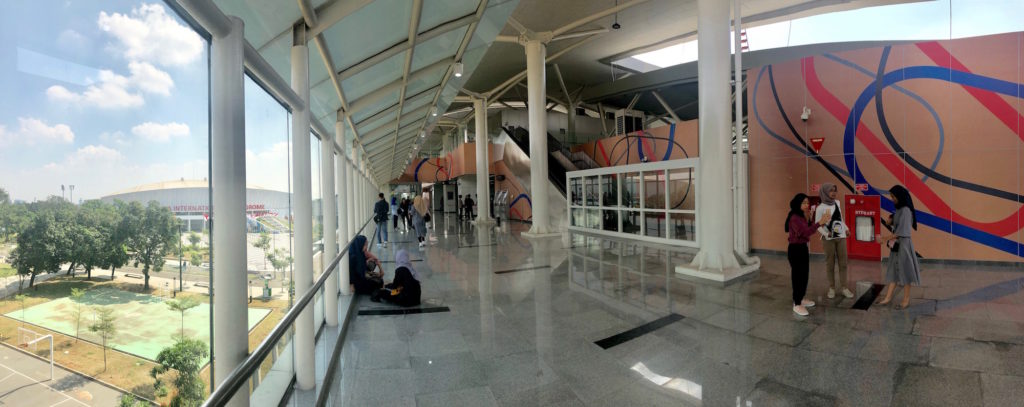
Velodrome Station, which is situated opposite Arion Plaza and adjacent to the Jakarta International Velodrome, is supposed to be integrated with the Pemuda Rawamangun TransJakarta stop. At the moment, the skybridge that’s supposed to link them is not yet operational because it’s still under construction, which meant I had to cross a very busy road.
I got up to the station by riding the escalator from the sidewalk (there are elevators at every station prioritized for disabled passengers), and it immediately struck me that the station was rather small, with the train platform located just behind the ticket counter. Design-wise, the color scheme seems dull compared to the thematically green/blue MRT stations. The style is reminiscent of several new “modern” airport terminals in Indonesia, such as Soekarno-Hatta’s Terminal 3.
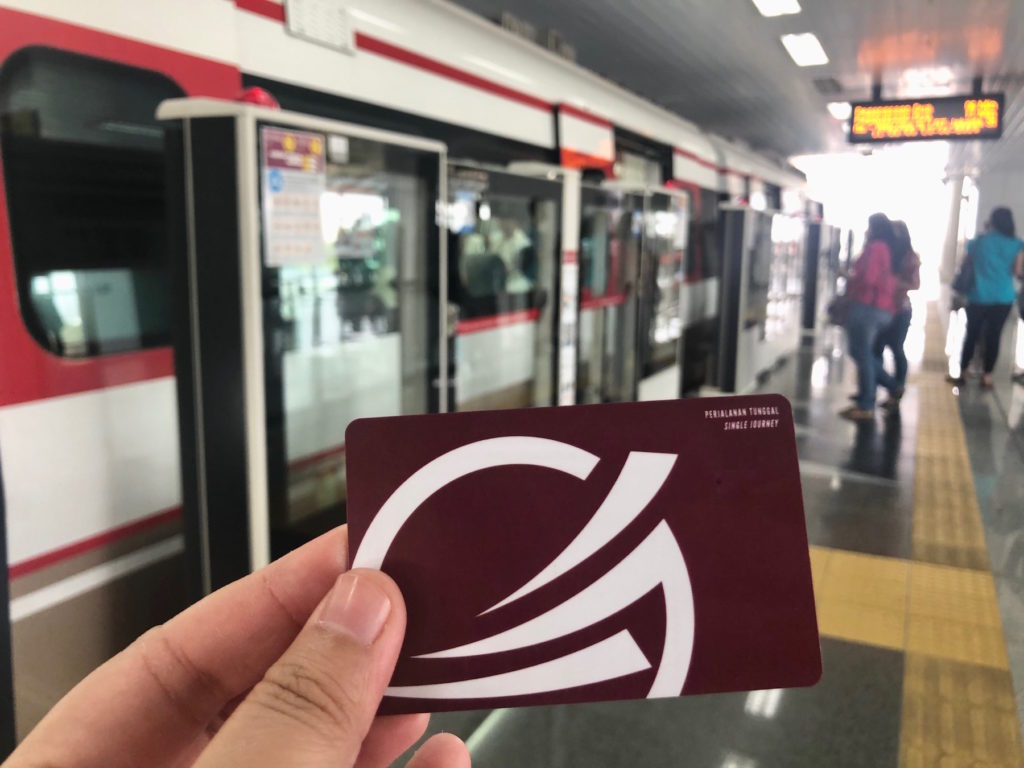
Either due to the station’s size or hype for the LRT during its trial run, Velodrome Station was pretty crowded for a work day. The fact that most schools are still out is likely to also be one of the main reasons why the trial was popular.
Similarly, the train itself was small, as it only consisted of two carriages. The train felt like an airport terminal transfer train — like in Singapore and Kuala Lumpur — made up of mostly standing room and minimal seating. Just like the MRT, though, the ride was smooth and fast.
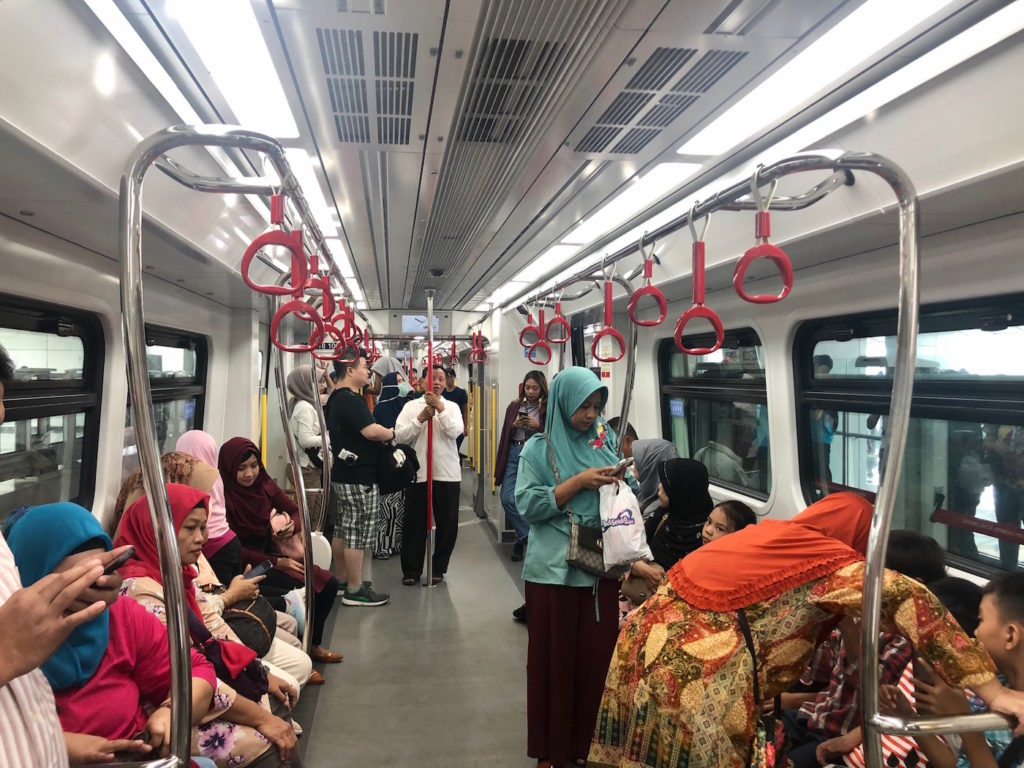
In fact, I reached the next station in what seemed like a blink of an eye. According to LRT Jakarta’s official website, the travel time between any two stations is only around 2.5 minutes. True enough, during my trial ride from Velodrome to Boulevard Utara (North Boulevard) stations, the travel time was under 10 minutes.
Who does the LRT benefit?
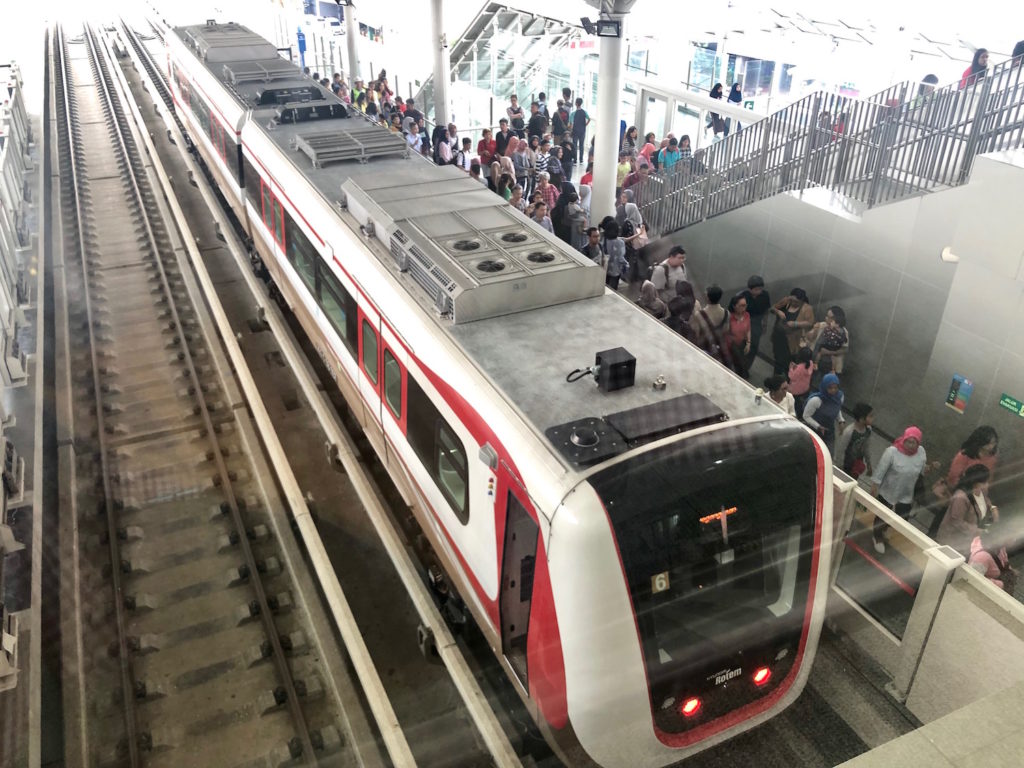
There are actually six elevated stations in the first phase of the LRT: Velodrome, Equestrian, Pulomas, Boulevard Selatan (South Boulevard), Boulevard Utara (North Boulevard), Pegangsaan Dua. However, only five stations or approximately 4.5 kilometers of the total route are operating during the trial run, which excludes Pegangsaan Dua.
When compared to the MRT, with its 16-kilometer route serving major transportation hub Lebak Bulus to the downtown business and entertainment district of Central Jakarta, the first phase of the LRT feels so local and tiny.
But the LRT Jakarta route from Rawamangun to Kelapa Gading runs along densely-packed residential areas where traffic is usually bad, especially from Pulomas to the roundabout in front of the North Boulevard Station. The LRT makes a lot of sense for residents in East and North Jakarta to beat the usual traffic jams before continuing their commute to downtown Jakarta or elsewhere.
For example, for someone living in Kelapa Gading and working in M.H Thamrin, it could take at least an hour for them to commute to work using the LRT and a feeder TransJakarta bus without the usual stress of driving their own car during rush hour. The same applies to those from West, Central and South Jakarta wishing to skip traffic jams to get to Kelapa Gading.
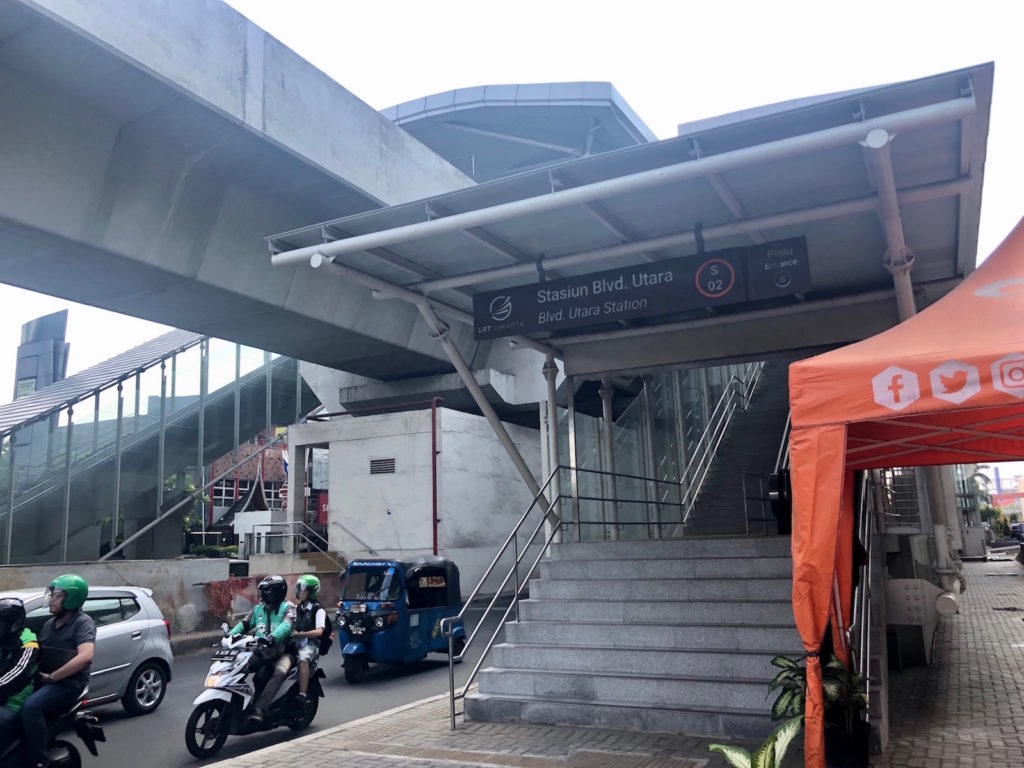
But considering the LRT’s short route, its flat IDR5,000 (US$0.35) fare, and how it’s not directly integrated to other rail-based transportation, I doubt that the first phase of the LRT could change people’s commuting habits in a short time. At least not until phase two of the LRT, which will connect Velodrome to Tanah Abang in Central Jakarta, is complete, though there is no word yet on when that will be.
For now, it could still make more sense for a lot of people living near LRT Jakarta stations to opt for motorcycle taxis or skip the LRT altogether for the TransJakarta — which already satisfactorily services many routes in the area — and save themselves the hassle of transferring to other modes of public transportation.
The trial run for LRT Jakarta is going on until Friday, June 21, with trains operating from 5:30am to 11pm daily with 10-minute headways. If you’d like to try the LRT Jakarta yourself, the easiest way to reach Velodrome Station is by getting on the corridor 4 (Pulo Gadung – Dukuh Atas), 4A (Grogol – TU Gas), 4C (Bundaran Senayan – TU Gas), 4D (TU Gas – Patra Kuningan), or 4H (Pulo Gadung – Ragunan) TransJakarta bus. If you’d like to embark from North Boulevard Station, you can get there on the JAK-59 Jak Lingko angkot (mini van) or you can use a ride-hailing app instead.
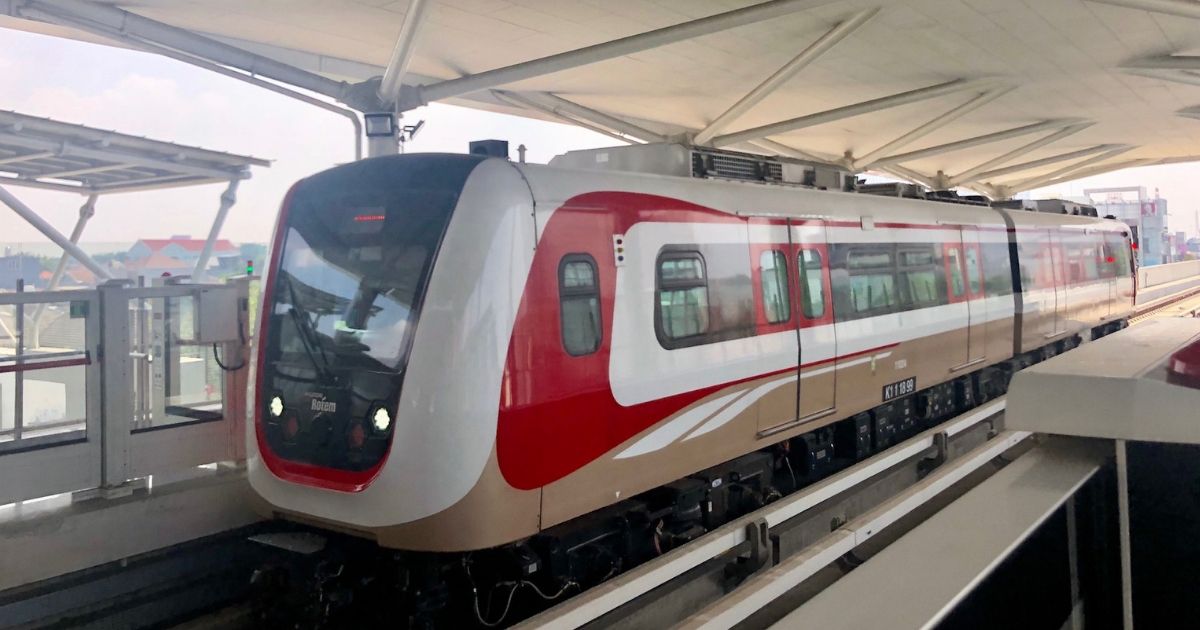


Reader Interactions